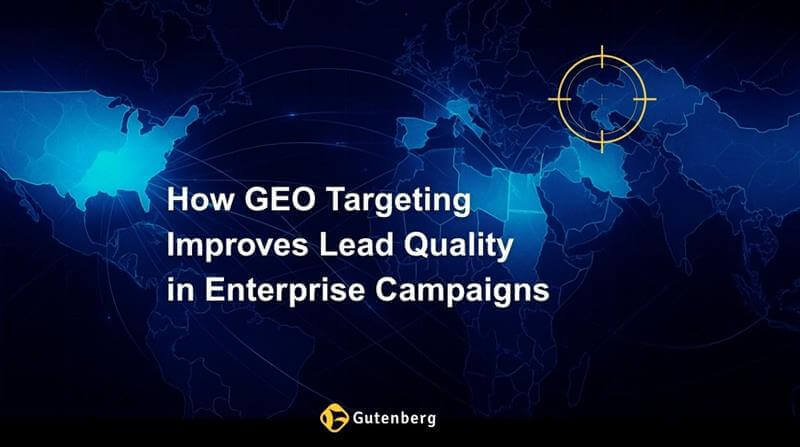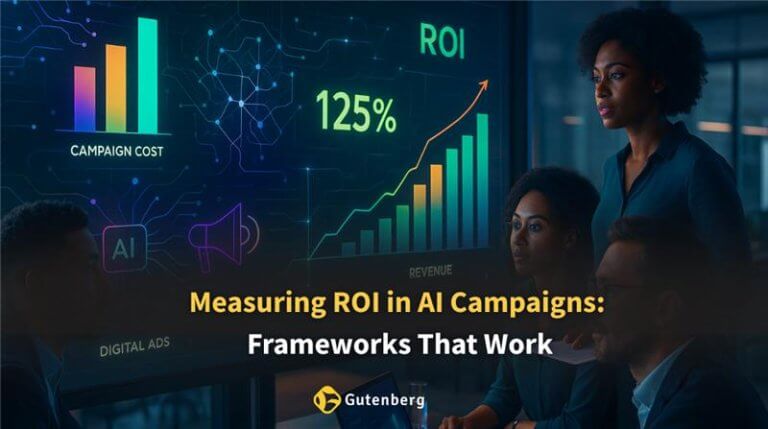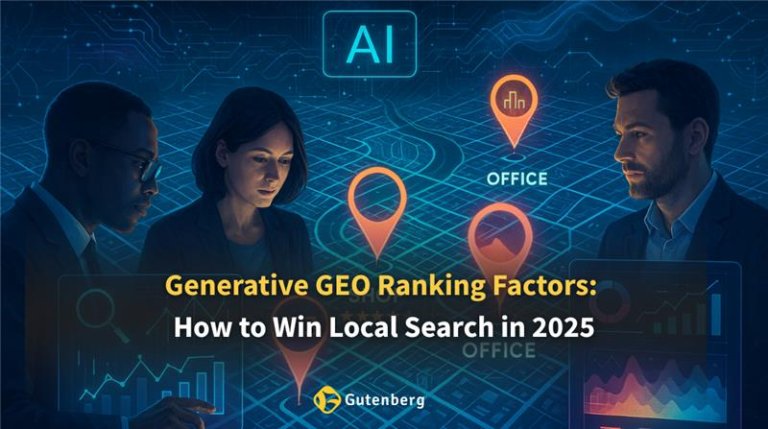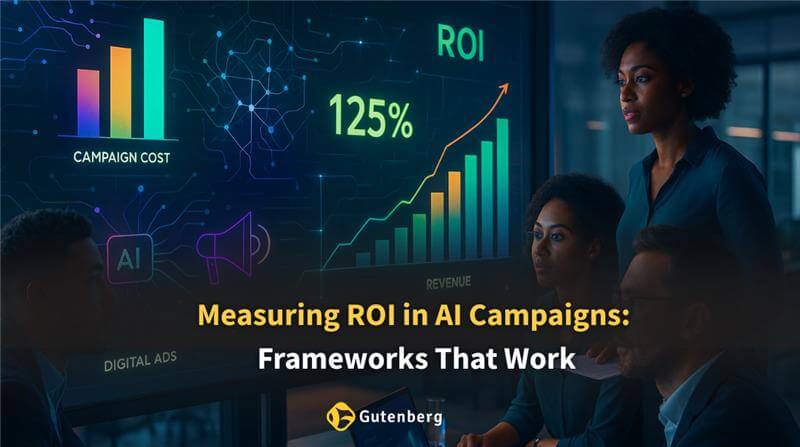Enterprise campaigns often prioritize reach—but without precision, lead quality suffers. While broad targeting may increase visibility, it doesn’t guarantee engagement or conversion. That’s where GEO targeting for enterprise campaigns becomes more than just a tactic. It plays a central role in refining outreach and improving lead accuracy.
With the ability to tailor campaigns based on geographic insights, businesses can make sure their efforts are more relevant to the audience. GEO targeting helps teams meet prospects where they are geographically and contextually.
In this blog, we explore how GEO targeting for enterprise campaigns improves lead quality. We’ll look at how it works, why it matters, and how brands can build a targeted campaign strategy that improves enterprise lead generation outcomes. We’ll also touch on SEO, generative engine signals, and how Gutenberg supports enterprise teams in making location-based marketing more effective.
What Is GEO Targeting and Why It Matters in Enterprise Campaigns
GEO targeting for enterprise campaigns refers to delivering content or ads to users based on their geographic location – such as country, city, ZIP code, or IP-based coordinates. Unlike basic segmentation, modern GEO targeting goes deeper, using real-time data and intent signals to reach prospects with more relevance.
For large-scale campaigns, location targeting offers an important layer of context. A buyer in California may have different regulatory concerns or seasonal cycles than one in Texas. GEO targeting helps teams account for this difference in both outreach and message positioning.
How GEO Targeting Directly Impacts Lead Quality
The value of GEO targeting for enterprise campaigns lies in its ability to filter, align, and optimize. It’s not just about where the user is, but how that location affects their purchase journey.
- Filters Out Low-Intent Leads: Without geographic filters, enterprise teams often waste ad spends on users who aren’t aligned with service coverage areas or industry clusters. GEO targeting lets marketers direct efforts to locations that fit their ICP. A SaaS company targeting IT decision-makers in Tier 1 cities can avoid impressions in smaller, low-priority markets.
- Aligns Messaging with Local Relevance: Message context plays a major role in conversion. GEO targeting enables localization at scale:
- Campaigns can reference regional compliance norms
- Messaging reflects local visuals, terms, or time zones
- Copy resonates better with market-specific context
- Optimizes Ad Spend in High-Conversion Zones: Budget efficiency improves when teams focus on geographic zones that drive performance. A targeted campaign strategy uses past data to identify regions with better lead-to-conversion ratios, allocate higher budgets to high-LTV zones, and minimize wasted impressions in underperforming areas.
Use Cases: GEO Targeting in Enterprise Marketing
GEO targeting for enterprise campaigns goes beyond basic awareness. It powers outreach across multiple functions – sales, events, account expansion, and more. Below are practical ways marketers are applying it today.
- Account Expansion by Region: Localized campaigns support upsells and cross-sell in cities with existing clients. Messaging can reflect regional usage trends or pain points, builds familiarity with regional teams and improves engagement.
- Targeting Regional Decision-Makers at Scale: Enterprise decision-making often spans regional teams. GEO targeting allows marketers to:
- Tailor campaigns to roles by geography (e.g., ops heads in South, IT leads in West)
- Improve response rates through region-specific language or value props
- Coordinate sales territory outreach more effectively
- Supporting Events and On-Ground Sales: Promotes local events, trade shows, or partner activations. Drives traffic through ZIP code or metro-focused ads. Improves local attendance and boosts post-event lead quality.
Building a GEO-Targeted Campaign Strategy for Better Leads
Getting the most from GEO targeting for enterprise campaigns requires more than a location filter. It needs a structured approach to content, timing, and segmentation.
- Segment Beyond the Obvious: Basic location targeting is just the starting point. Enterprise teams can go further by targeting metro zones instead of entire states, aligning campaign zones with sales territories, using IP or ZIP code-based filtering, and identifying underserved markets based on historical data.
- Customize Content by Region: One-size-fits-all creative rarely performs well. GEO targeting supports dynamic content blocks and city-specific experiences that improve engagement.
- Use Localized Data for Better Timing: Timing matters in campaign execution. GEO targeting allows teams to:
- Sync launches with local holidays or regional events
- Target procurement teams during fiscal closes
- Adjust ad scheduling to regional working hours
GEO Targeting and SEO: How Location Signals Help Performance
GEO signals also influence discoverability in search and generative platforms. GEO targeting for enterprise campaigns can be extended to website content, improving both organic visibility and context in AI-generated answers.
- Examples of GEO SEO Tactics: City-specific service pages targeting industry + location keywords, adding local business schema markup to boost Google visibility, and optimizing metadata and URLs with location-intent phrases.
These enhancements strengthen your location-based marketing strategy and improve ranking for high-intent, regional search queries. They also improve contextual match for generative engines like ChatGPT and Perplexity, which often prioritize location relevance in answers.
How Gutenberg Helps Enterprise Teams Apply GEO Targeting
For GEO targeting to be effective, it must align with larger campaign goals, brand voice, and sales operations. That’s where Gutenberg adds value.
Gutenberg supports enterprise teams in applying location-based marketing with strategy-first execution. From developing region-specific messaging to managing localized campaign rollout, the team ensures every geo-input contributes to qualified pipeline outcomes.
Whether you’re launching new campaigns or optimizing existing ones, Gutenberg builds scalable systems for enterprise lead generation with GEO targeting baked in.
Looking to improve your lead quality with smarter GEO targeting? Talk to Gutenberg to build campaigns that match regional intent with enterprise-level precision.
Conclusion
- Filters out low-intent leads by focusing only on relevant regions
- Aligns messaging with local context, increasing engagement
- Allocates budget more effectively toward high-converting zones
- Drives higher lead accuracy for enterprise marketing teams
- Improves enterprise lead generation outcomes across territories
- Strengthens SEO and generative engine visibility through location signals
A strong targeted campaign strategy includes geography as a foundation. GEO targeting helps businesses stop guessing and start connecting with the right people in the right place.
And when you’re ready to make geography work harder for your business, Gutenberg is ready to help.
Frequently Asked Questions
- How does GEO targeting improve lead quality in B2B marketing? GEO targeting improves lead quality by narrowing outreach to specific regions where ideal customers are more likely to be active. It helps align messaging with local context, filters out low-intent traffic, and increases conversion potential.
- What is the best way to use GEO targeting for enterprise campaigns? The best way is to combine regional segmentation with localized content, region-specific ad scheduling, and sales territory alignment. This ensures campaigns are relevant, timely, and better connected to business goals.
- Why should enterprises focus on location-based marketing? Location-based marketing allows enterprises to speak directly to region-specific pain points, regulations, and market dynamics. This improves engagement, boosts ROI, and supports more efficient lead generation.
- Can GEO targeting help with enterprise lead generation across multiple regions? Yes. GEO targeting makes it easier to scale enterprise lead generation by customizing outreach based on each region’s intent signals, market maturity, and timing. Partnering with a team like Gutenberg helps streamline this process with precision.
- How does GEO targeting impact SEO and generative engine visibility? GEO targeting strengthens local SEO by enabling city-specific pages, metadata, and structured data. It also improves relevance in generative engine responses by aligning content with regional search intent.
















